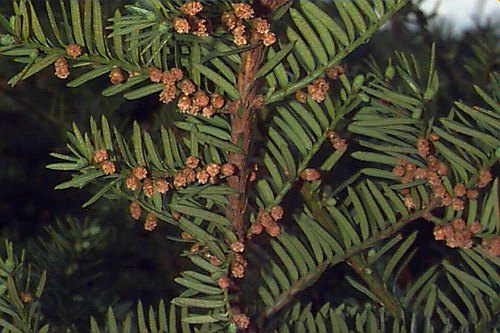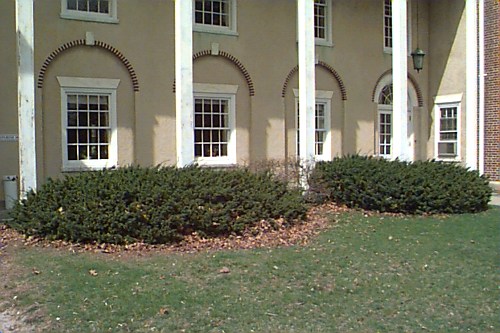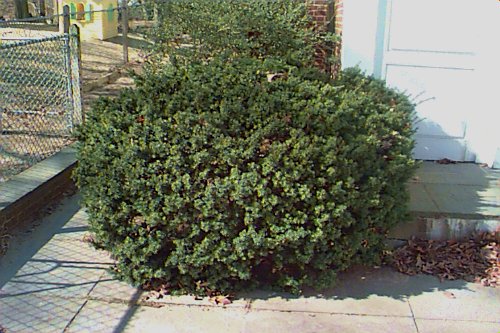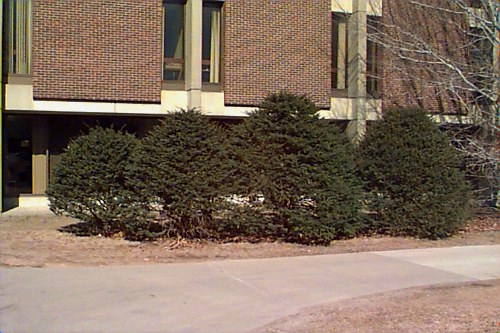Taxus cuspidata
Japanese Yew
Taxaceae
ExpandHabitat
- native to Japan, Korea and Manchuria
- hardy to zone 4
- Special Note: This species has demonstrated an invasive tendency in Connecticut, meaning it may escape from cultivation and naturalize in minimally managed areas. For more information, .
Habit and Form
- evergreen
- single trunked or multi-stemmed shrub
- 10' to 40' tall with equal or greater spread
- growth characteristics vary from broad to narrow, spreading to upright and flat-topped to pyramidal
- medium texture
- slow growth rate
Summer Foliage
- needle like foliage
- two-ranked needles are not distinct
- 0.5" to 1" long and only 0.10" wide
- buds are brown and imbricate
- dull green color on upperside
- pale green on underside
- needles can be straight or curved
- leave apex is sharply pointed
Autumn Foliage
- none, evergreen
- some winter yellowing occurs
Flowers
- dioecious
- form on previous years wood
- blooms in March and April
- ornamentally unimportant
Fruit
- hard seed covered by a red aril
- mildly attractive
Bark
- reddish brown bark
- scaly
Culture
- easily transplanted from B&B or container
- prefers moist, well-drained, sandy, slightly acidic soil
- prune tolerant
- sun or shade
- pollution tolerant
Landscape Use
- foundation plantings
- mass or groupings
- hedge
- screen
- topiary
- bonsai
Liabilities
- no serious insect problems
- yellowing in windswept sites
ID Features
- non-distinct two-ranked needles
- red aril covering seed
- reddish brown bark
- straight or curved needles
- sharp pointed leaf apex
Propagation
- mostly done by cuttings
Cultivars/Varieties
'Aurescens' - An unusual slow-growing plant, this cultivar seldom exceeds 3' tall and wide. It is most notable for the young foliage, which emerges bright yellow before dulling to green. 'Dwarf Bright Gold' features golden needles on a slightly larger plant. This plant has become popular in specialty catalogs.
'Capitata' - This is the most common form of the species in commerce. It forms a broad, pyramidal that eventually appears as a tree. It can grow very tall with age, but gardeners usually prune the plant. The dark green needles bronze somewhat in winter.
'Columnaris' - Similar to 'Capitata' in most respects, this selection grows more narrowly and quicker. The foliage holds its green color all year.
'Expansa' - This name is applied to many clones with a broader than tall habit and a more open, vase-shaped habit.
'Nana' - Widely considered a valuable evergreen accent plant, this spreading plant grows slowly to 10' and perhaps twice as wide in many years. The dark green needles hold their color well all year and are arranged around the stems.



